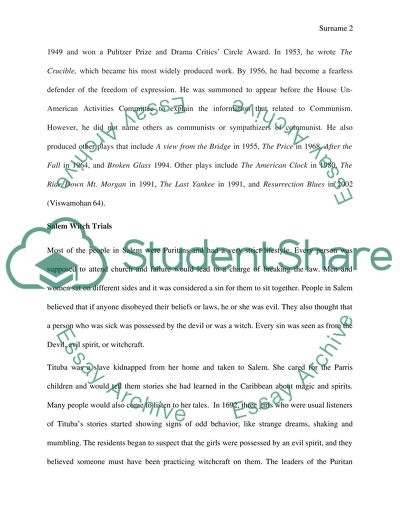Cite this document
(“The Crucible by Arthur Miller Research Paper Example | Topics and Well Written Essays - 2750 words”, n.d.)
Retrieved from https://studentshare.org/english/1698727-the-crucible-by-arthur-miller
Retrieved from https://studentshare.org/english/1698727-the-crucible-by-arthur-miller
(The Crucible by Arthur Miller Research Paper Example | Topics and Well Written Essays - 2750 Words)
https://studentshare.org/english/1698727-the-crucible-by-arthur-miller.
https://studentshare.org/english/1698727-the-crucible-by-arthur-miller.
“The Crucible by Arthur Miller Research Paper Example | Topics and Well Written Essays - 2750 Words”, n.d. https://studentshare.org/english/1698727-the-crucible-by-arthur-miller.


